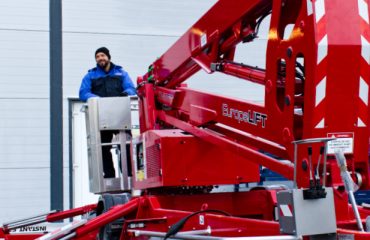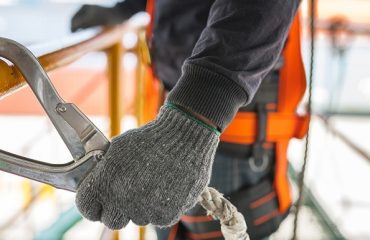Falls in connection with work at height are one of the most common causes of injury and death in Norwegian workplaces. The Norwegian Labour Inspection Authority has now launched a new guide for working at heights. The aim is to discourage employers from allowing employees to carry out risk analyses themselves through safe job analysis (SJA). The use of SJA is particularly widespread in the construction industry in Norway. The Norwegian Labour Inspection Authority sees that SJAs are regularly carried out without specifying who is to supervise the work on behalf of the employer. When employees sign the SJA and an accident occurs, the employees often become the scapegoat.
In the guide, the Norwegian Labour Inspection Authority writes, among other things, that the employer is responsible for:
-mapping the work tasks and assessing whether there are conditions in the work that may be risky and lead to injuries
-implement measures that reduce the risk of injury and safeguard the safety of employees
– assess whether some of the tasks that were previously performed at height can be performed from the ground instead
– use safety measures such as scaffolding, stair towers, railings and lifts (personnel lifts) if you still have to perform work at height.
The new guide can be found here: The Norwegian Labour Inspection Authority’s guide for work at height.
Every year, several serious accidents occur in connection with working at height, and many of these could be avoided if employers and employees were more aware of the risks. One of the biggest risks associated with working at height is falls. Even from relatively low heights, a fall can lead to serious injury or death. This can be due to poor maintenance of the equipment used, such as ladders, scaffolding or work platforms, or failure to use personal protective equipment such as fall protection. In some cases, inattention or poor training can also be the cause of fall accidents.
Weather conditions can also increase the risk of working at height. Slippery or wet surfaces can make it difficult to maintain balance, while strong gusts of wind can make it dangerous to work on high scaffolding or work platforms. Employers must take weather conditions into account and ensure that work is carried out safely.
To minimise the risks of working at height, employers and workers must work together to identify potential hazards and implement necessary safety measures. This can include thorough training of workers, regular maintenance of equipment, use of personal protective equipment and risk assessments before work starts. In addition, there should be clear procedures for dealing with situations where something goes wrong. This may include having an emergency plan to deal with fall accidents, and having emergency phones and first aid equipment available in the workplace.
Working at height can be challenging and dangerous, but with the right training and safety measures, the risk can be minimised. It is important that employers take responsibility for ensuring that work is carried out safely, and that workers are aware of the risks and take the necessary precautions to protect themselves.
 We offer a wide range of online courses for the construction industry available at instantkurs.com – including several different courses for working at height such as scaffolding courses, use of lifts, fall protection equipment, hot work, lifting equipment, dangerous tools etc.
We offer a wide range of online courses for the construction industry available at instantkurs.com – including several different courses for working at height such as scaffolding courses, use of lifts, fall protection equipment, hot work, lifting equipment, dangerous tools etc.
Instant Gruppen is one of the country’s leading suppliers of scaffolding, lifts, material handling and online training. Check out our products at instant.as
Do you have questions or need advice? Don’t hesitate to get in touch.




